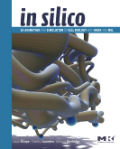
In silico: cell biology art and science with MAYA and MEL
Sharpe, Jason
Lumsden, Charles
Woolridge, Nicholas
INDICE: Preface Who is this book for? Why Maya? What the book offers Acknowledgments Contact us Part 1 Setting the stage Chapter 1 Introduction The challenge Wetware for seeing Visualization in Science Organizational hierarchy: Keys to biology in vivo and in silicoEnter Maya Endless possibilities ReferencesChapter 2 Computers and the organism Introduction Information and Process Language and Program High and Low Interpret or Compile? The Backus Watershed Stored Programs Conditional Control The Computed Organism The Computational Organism OOPS and Agents Summary References Chapter 3 Animating biology IntroductionAnimation and film perception Part 2 A foundation in Maya Chapter 4 Maya basics Getting started How Maya works (briefly) Maya?s user interface (UI) SummaryChapter 5 Modeling geometry Introduction NURBS modeling Tutorial 05.01 NURBS primitive modeling Tutorial 05.02 Deform the sphere using components Tutorial 05.03 Make and deform a polygon primitive Tutorial 05.04 Construction history Tutorial 02.05 Create a NURBS ?fiber? Summary References Chapter 6 Animation Introduction Animation Tutorial 06.01 A keyframe animation Tutorial 06.02 A simple procedural animation Chapter 7 Dynamics Introduction The Dynamics module Tutorial 07.01 Rigid body dynamics Tutorial 07.02 Particles in a container Tutorial 07.03 Create a playblast Summary Chapter 8 Shading Introduction The Render menu set Shading 209 Tutorial 08.01 Shading Chapter 9 Cameras Maya cameras Tutorial 09.01 A camera on hemoglobin Chapter 10 Lighting Lighting 253 Tutorial10.01 Lighting the hemoglobin scene Chapter 11 Action! Maya rendering Rendering Advanced rendering techniques with the mental ray for Maya renderer Tutorial 11.01 Batch rendering Tutorial 11.02 Playback using fcheck Summary Chapter 12 MEL Scripting Introduction The origins of MEL In a word: Scripting Getting started MEL syntax Values Variables Mathematical and logical expressions The MEL command Attributes in MEL Conditional statements Loops Procedures Animation expressions Putting it all together: The MEL script Tutorial 12.01 Building a MEL script Debugging your scripts Random number generation in Maya Summary Chapter 13 Data Input/Output Introduction Translators Reading and writing files with MEL Tutorial 13.01 Visualizing cell migration Summary Part 3 Biology in silico-Maya in action Chapter 14 Building a protein Introduction Problem overview Methods: Algorithm design Encoding the algorithm Results: Running the scriptChapter 15 Self Assembly Introduction Problem overview Methods: Actin geometry Diffusion and reaction events Reaction rates and probabilities Algorithm design Encoding the algorithm Results: Running your simulation Summary ReferencesChapter 16 Modeling a mobile cell Introduction Problem overview Model definition Methods: Generating pseudopods Algorithm design A cell locomotion engine Encoding the algorithm Loading the script Running the script Summary ReferencesChapter 17 Growing an ECM scaffold Introduction Problem overview Model definition Methods: Algorithm design Encoding the algorithm Grow your scaffold! Results: Parameter effects Summary References Chapter 18 Scaffold invasions: Modeling 3D populations of mobile cells Introduction Problem overview Model definition Methods: Model design Encoding the algorithm Running the simulation Results: Data output Summary References Chapter 19 Conclusion Glossary Further Reading Index.
- ISBN: 978-0-12-373655-0
- Editorial: Morgan Kaufmann
- Encuadernacion: Rústica
- Páginas: 674
- Fecha Publicación: 01/05/2008
- Nº Volúmenes: 1
- Idioma: Inglés
